Newsletter: How LACMAâs stripped-down exhibition of Afro-Atlantic art falls short
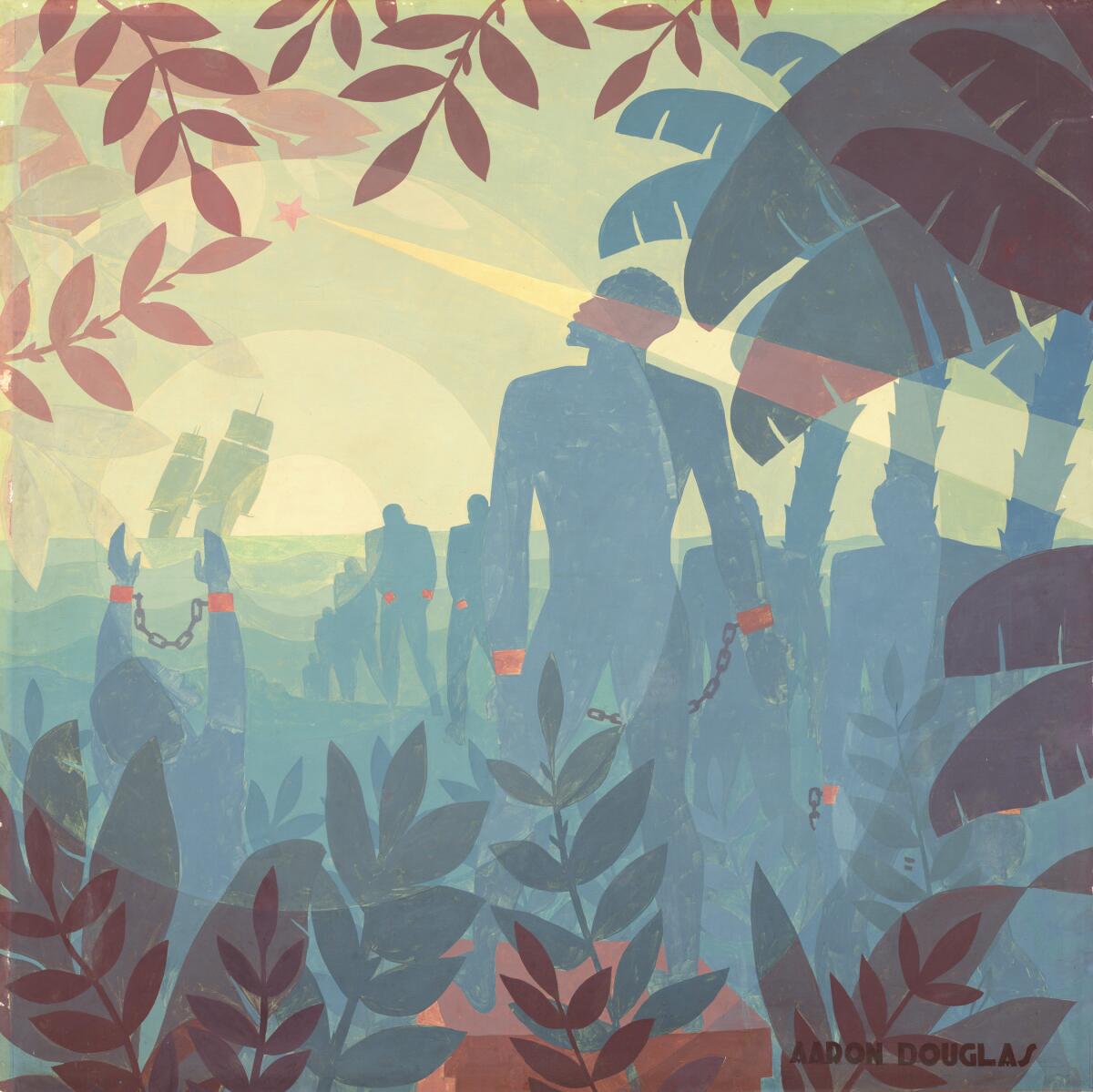
Groundhog Day is coming up â again! â next Thursday, Feb. 2. Iâm Times art critic Christopher Knight, filling in for regular arts newsletter scribe Carolina Miranda, who is rumored to be out nailing down an exclusive interview with Punxsutawney Phil.
The Black diaspora in art
Make the most of L.A.
Get our guide to events and happenings in the SoCal arts scene. In your inbox once a week.
You may occasionally receive promotional content from the Los Angeles Times.
If youâve been looking for a concise overview of Modern and, especially, contemporary Afro-Brazilian art â mostly paintings, but also some sculpture, video and drawing â âAfro-Atlantic Historiesâ seems to cover the bases. The exhibition, on view at the Los Angeles County Museum of Art for the next seven months, includes just over 100 examples, all but a relatively small handful made since the start of World War II.
And thatâs a pity. When it opened five years ago in SĂŁo Paulo, âAfro-Atlantic Historiesâ was hailed as a revelation for the ways current art related to the complexities of the African diaspora, principally in Brazil, since the 16th century. Organized by the Museu de Arte de SĂŁo Paulo Assis Chateaubriand, commonly known as MASP, and the nearby Instituto Tomie Ohtake, the sprawling exhibition then featured around 450 works of art. A radical downsizing was undertaken by the National Gallery of Art in Washington, D.C., and the Museum of Fine Arts, Houston, to bring a small segment of the lauded show to the United States. In the process, almost all the historical material, rarely seen in any depth in North America, has been excised.
Itâs a shadow of its former self. The exhibitionâs introductory first room is emblematic. Of eight works, six are contemporary, one Modern and just one historical.
Divided into such themes as âEmancipation,â âEveryday Lives,â âPortraitsâ and more, the show begins with âMaps and Margins,â which astutely locates Africa as integral to the development of Western art history since the Renaissance. At the entry, âA Place to Call Home (Africa-America Reflection),â a provocative wall-relief in highly polished stainless steel by Hank Willis Thomas offers a contour map of the Western Hemisphere â albeit with South America swapped out for the vaguely similar shape of Africa, slightly reduced in relative size.
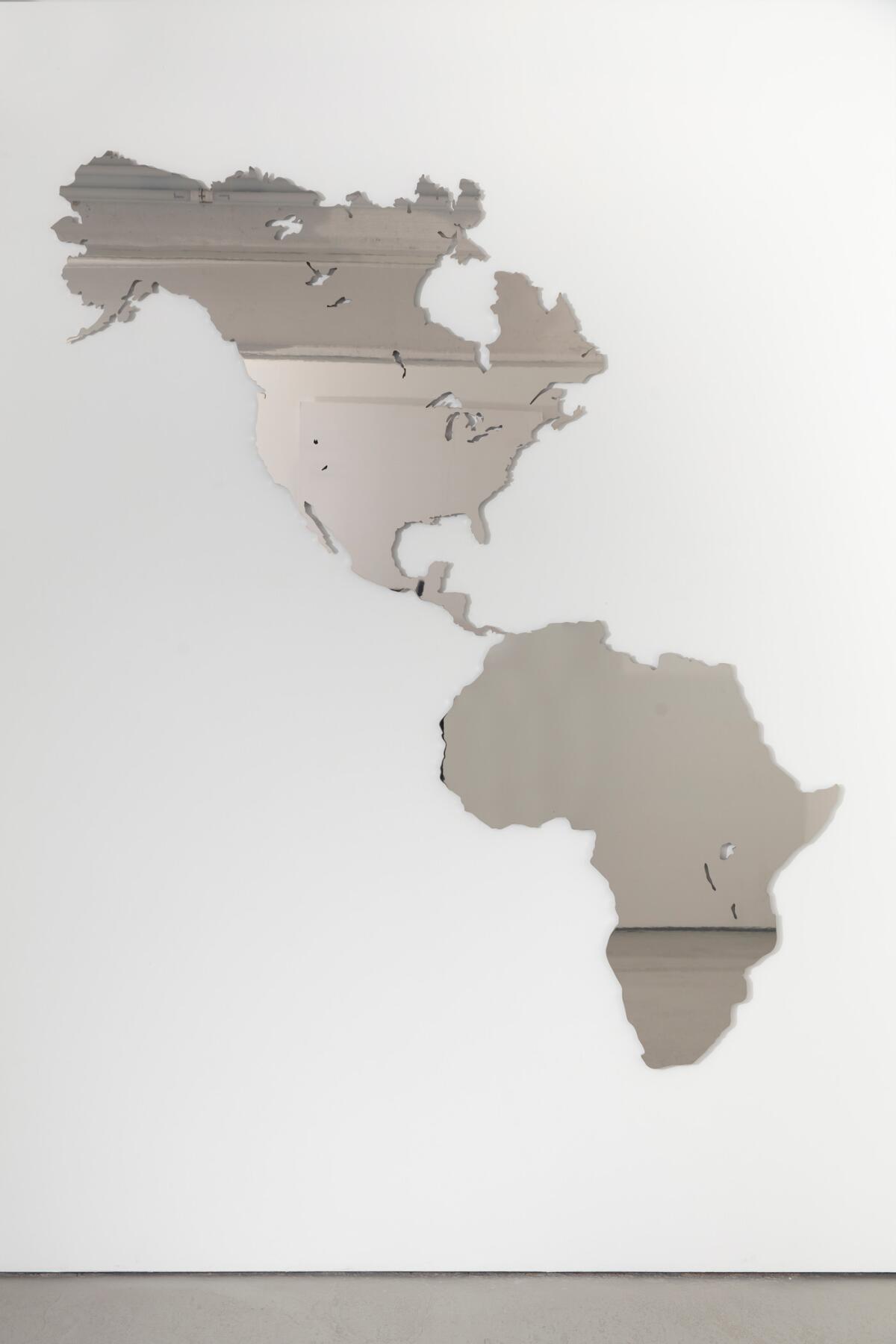
With Portuguese colonizers buying enslaved West Africans and transporting them to Brazil, the Atlantic slave trade began half a millennium ago. Brazil, which brought nearly 5 million enslaved people to the hemisphere â more than any other country â was also the last Western nation to abolish the horrific practice (in 1888). âIn this country, the Blacks occupy the main role,â wrote Ina von Binzer, a 19th century German governess living in Brazil. âThey are responsible for all the labor and produce all the wealth in this land. The white Brazilian just doesnât work.â
The centrality of seafaring skill to the proliferation of forced, free Black labor in European colonies to create massive stolen wealth is evoked in several works, starting with Aaron Douglasâ iconic 1936 painting âInto Bondage.â Silhouetted men and one woman in chains, manacles glowing red on their wrists, march to the sea, where ships bob on the horizon. Concentric circles of color radiate outward from beyond the horizon, linking past and future.
Betye Saarâs well-known âIâll Bend But I Will Not Breakâ (1998) fuses a cleaning ladyâs ironing board with the telltale shape of a famous 18th century British diagram of the packed hold of a slave ship in the Middle Passage between Africa and the Caribbean. In a work from Todd Grayâs lengthy recent series of âAtlantic Lullabies,â collaged, framed and layered photographs of people, architecture and places drift back and forth across a fluid sea of time and space, the extravagance of Giovanni Battista Tiepoloâs ravishing 18th century Venetian murals linked to the bleak cruelty of Europeâs sea-power. (Gray divides his time between Los Angeles and Ghana.) An archetypal 2019 wood carving of a âSlave Shipâ by Brazilian artist JosĂŠ Alves de Olinda merges figures of people with totemic Yoruba sculptures, signifying the transport of ethereal spirit in the diaspora, along with bodily human beings.
A lone painting in the room dates from the late 18th century. âEuropean Ship Wrecked on the Coast of Africa, known as African Hospitalityâ by the once wildly popular, now less well-known British moralist George Morland shows a melodramatic, storm-tossed coastal scene, complete with an angry sky, painted in a dusty range of browns, gray-greens and melancholic violet. Frightened European disaster survivors are being cared for by Africans. The painting was the second installment of an abolitionist pair, the other showing European slavers callously separating a Black family in the aftermath of the auction block â the first-known British anti-slavery image, which became the source of a widely distributed engraving.
The painting is one of fewer than 20 historical works in the show, which severs an important thread of contrast, complexity and continuity in its themes. Morland was white, the other artists in the room are Black. Thatâs not surprising, given the legal constraints around work, language and image-making until the Modern era. But the absence of historical examples of Black subjects by artists as diverse as John Philip Simpson, JosĂŠ Gil de Castro, Augustus Earle, Victor Meirelles, Dirk Valkenburg, Agostino Brunias and many more Europeans and Americans â white, Black, Latino, mixed-race and some unidentified â blunts the record, depriving the presentation of much-needed scale and nuance.
This is one of those rare occasions where the exhibition catalog is often more rewarding than the exhibition itself. Headed by MASP curator Adriano Pedrosa, the team has apparently kept most of the original printed material intact, while slightly altering the 400-page book for the tour. (LACMA curators Rita Gonzalez and JosĂŠ Luis Blondet oversaw the local installation, while Pedrosa, who is supervising a series of big shows on sexuality, Indigenous life, feminism and other themes for his museum, was recently named curator for the 2024 Venice Biennale.) The book offers a wealth of information, with insightful essays by seven additional scholars.
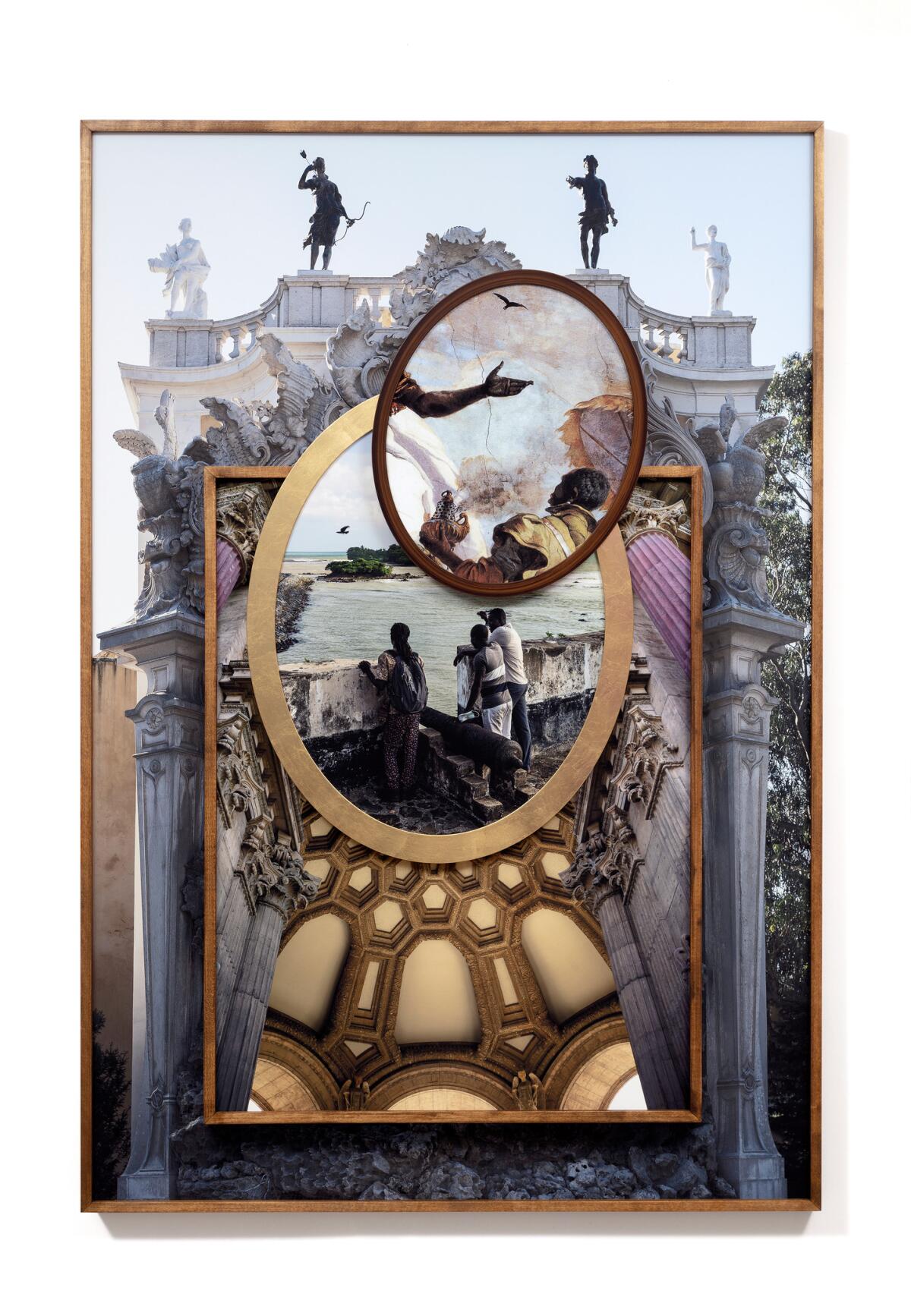
In its original incarnation, the exhibitionâs Portuguese title was âHistĂłrias Afro-Atlânticas.â The direct translation of histĂłrias is stories, not just histories, and in this stripped-down version of the show we mostly hear only recent stories of the Black diaspora in the Western Hemisphere. Thatâs not bad, just disappointing, especially as any number of other first-rate contemporary Black artists long concerned with similar approaches are surprisingly excluded. (Start with Martin Puryear, whose first L.A. solo exhibition in 30 years opens Feb. 16 at Matthew Marks Gallery in West Hollywood.) The selection, while including a number of Brazilian artists not often seen here, feels nearly random.
At a time when Black art, its history and its critical position within Western art history are at the forefront of international revelation, the revised exhibition falls far short. LACMA, as if it were a museum of Modern and contemporary art rather than world art history, continues its unfortunate trajectory of over-emphasizing 20th and 21st century work. (Of eight current special exhibitions at the museum, seven fit that bill.) History matters, but these days those stories are mostly missing on Wilshire Boulevard.
5905 Wilshire Blvd., (323) 857-6000, through Sept. 10. Closed Wednesdays.; lacma.org
In memoriam
California is reeling from two horrific mass shootings that took place last week: one in Monterey Park last Saturday that left 11 people dead and 9 injured, and another that took the lives of seven people in Half Moon Bay on Monday. The city of Tucson recently unveiled a permanent memorial in memory of six people who died at a mass shooting in the Arizona city on Jan. 8, 2011. Carolina Miranda has a look at how the pair of symmetrical black limestone pools at the January 8th Memorial serve âas a permanent expression of that moment â both the tragedy and the communal recovery.â In the wake of these mass shootings, she writes, âTucsonâs crater-like monument notwithstanding, these impacts feel less like the strikes of meteors than the devastations of a cancer devouring us from within.â
Ukraine, not Russia
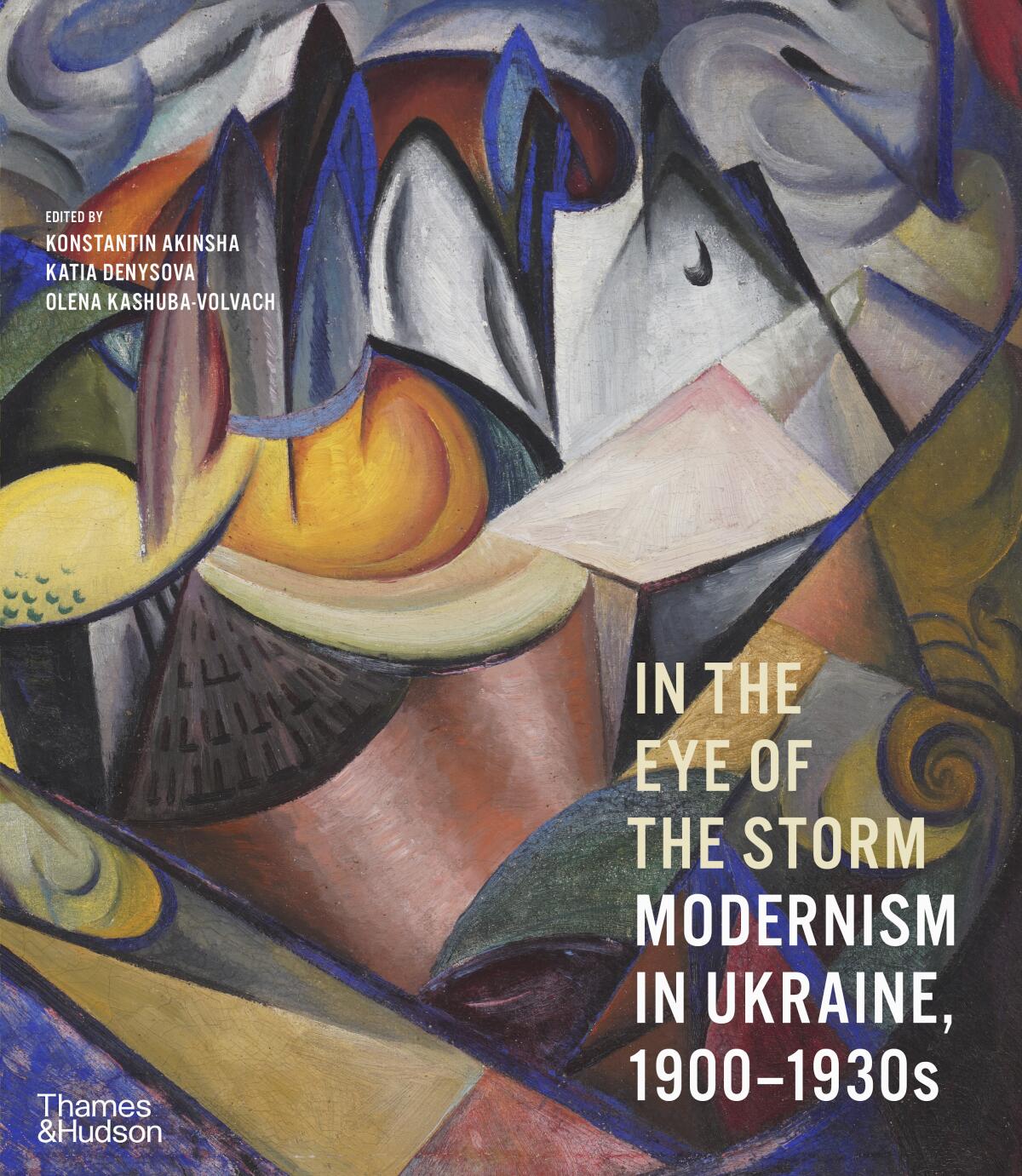
As Russiaâs vicious invasion of Ukraine approaches its first anniversary, an exhibition at Madridâs Thyssen-Bornemisza National Museum seeks to pry apart one facet of Vladimir Putinâs propaganda machine around the assault. Followers of Modern art know that Russian avant-garde artists created a stunning visual and intellectual revolution early in the 20th century. But the exhibition âIn the Eye of the Storm: Modernism in Ukraine, 1900-1930sâ wants to specify that some of those important artists, including Alexandra Exter and Sonia Delaunay, were in fact Ukrainian, while other Russian artists, such as Kazimir Malevich and El Lissitzky, sometimes traveled to Kyiv, Odesa and elsewhere in Ukraine to work. Making sharp cultural distinctions between the two countries, rather than absorbing one into the other, is the point.
After it closes in Madrid (April 30), the show will travel the Ludwig Museum in Cologne, Germany, opening June 3. In the meantime, Thames and Hudson is next week publishing a handsome English edition of the catalog.
Conduct unbecoming?
On Tuesday, the Academy of Motion Picture Arts and Sciences nominated the much-lauded classical music film âTĂĄrâ for six Oscars, including a nod for Cate Blanchettâs turn as the title conductor, Lydia TĂĄr.
Great news for fans of Mahler and classical composer friends? My colleague Mark Swed, The Times classical music critic, says no.
Emphatically.
Mahler will survive the thunderous blandishments of the Hollywood editing room, he writes in a searing commentary (âOscar nominee âTĂĄrâ brought conducting into the spotlight. Thatâs not good for classical musicâ). But the movie âhappens to be a mean-spirited horror film with a classical music industry chip on its shoulder the size of the Hollywood Bowl. It resembles fake news more than fiction.â
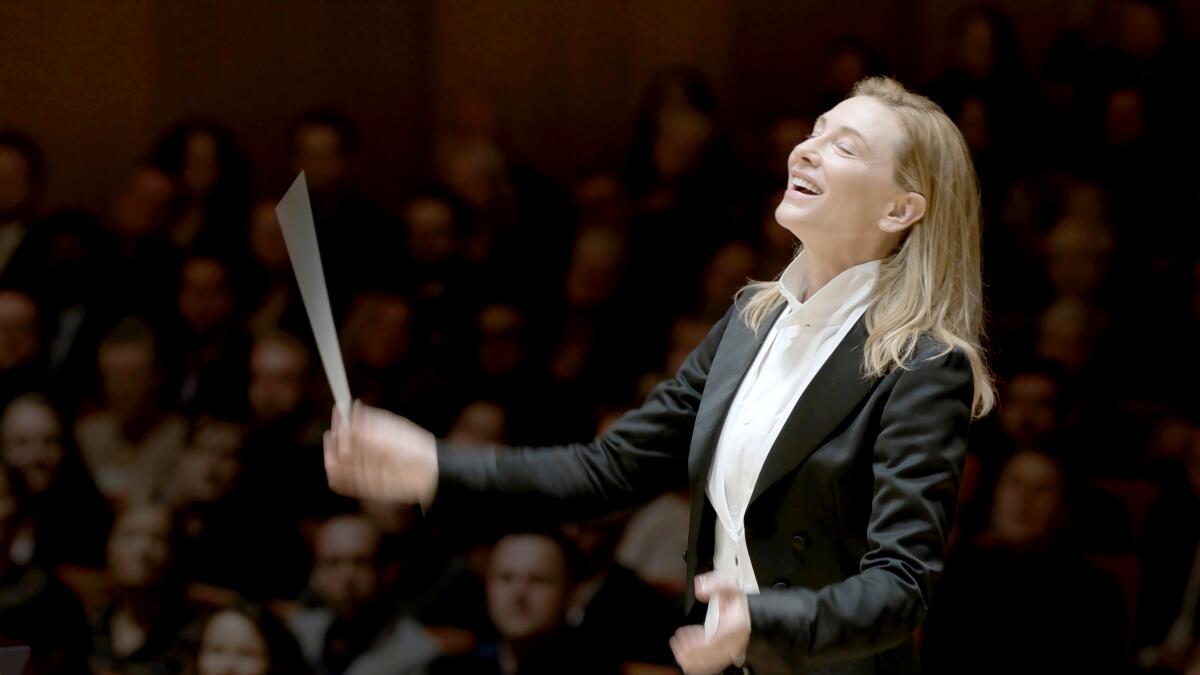
Worse, Hollywood, like New York, obliviously smacks Los Angeles upside the cultural head: âShould those of us in L.A. not be offended by a Hollywood film cluelessly referring to the âBig Fiveâ America orchestras while leaving out the Los Angeles Philharmonic, the biggest by all relevant measurements?â Swed asks. âThe film opens with New Yorker writer Adam Gopnik interviewing TĂĄr at a New Yorker talk, and when he brings up the so-called Big Five you wonder whether he reads his own magazine.â
Double ouch.
Perhaps tellingly, none of the movieâs Oscar noms were in categories for music or sound. Swedâs column is well worth the insightful read.
Enjoying this newsletter? Consider subscribing to the Los Angeles Times
Your support helps us deliver the news that matters most. Become a subscriber.
Oscar semi-surprise

Times theater critic Charles McNulty reported on a disappointing spate of recent movie-going, marked by what he found to be poor cinematic acting performances. But, in the father-daughter drama âAftersun,â he was enthralled with young Irish actor Paul Mescal â currently playing Stanley in London in the Almeida Theatre Company revival of Tennessee Williamsâ âA Streetcar Named Desire.â Mescal snagged a somewhat unexpected best actor Oscar nomination the next day. McNultyâs prescient assessment is here.
Yet more Oscars
Photographer Nan Goldin, best known for âThe Ballad of Sexual Dependency,â her tough multimedia slide show about her late-1970s life and community in New York and Europe, might become that rare visual artist to earn an Academy Award.

âAll the Beauty and the Bloodshed,â produced by Goldin and the team of Laura Poitras, Howard Gertler, John Lyons and Yoni Golijov, is up for the documentary feature film Oscar. It tells the story of Goldinâs relentless â and relatively successful â efforts to hold the Sackler pharmaceuticals family accountable for its role in creating the lucrative and devastating opioid epidemic through Oxycontin marketing. (The Sacklers, prominent international art patrons, denied wrongdoing.) It won the Golden Lion for best film this year at the Venice International Film Festival.
Before the nominations, Times columnist Glenn Whipp went further. He wrote that the film âdeserves to be the first documentary nominated for best pictureâ at the Academy Awards, a genre barrier he suspects might never be broken.
Moves
The Hollywood Arts Collective, a new rent- and income-restricted apartment building with 152 low-income units in Hollywood for artists, is now accepting applications. The deadline is Feb. 15. The building is estimated to open sometime during the summer.
German architect Fritz Block, who fled Nazi persecution with his family in 1938 and settled in Los Angeles, shifted his professional focus to color photography after he arrived. In 1943, he started Dr. Block Color Productions to distribute to educational venues 27 color slide series on architecture, art, sculpture, design, technology and nature. Now the Getty Research Institute has acquired about 6,000 of those slides, a gift of the Manfred Heiting Trust.
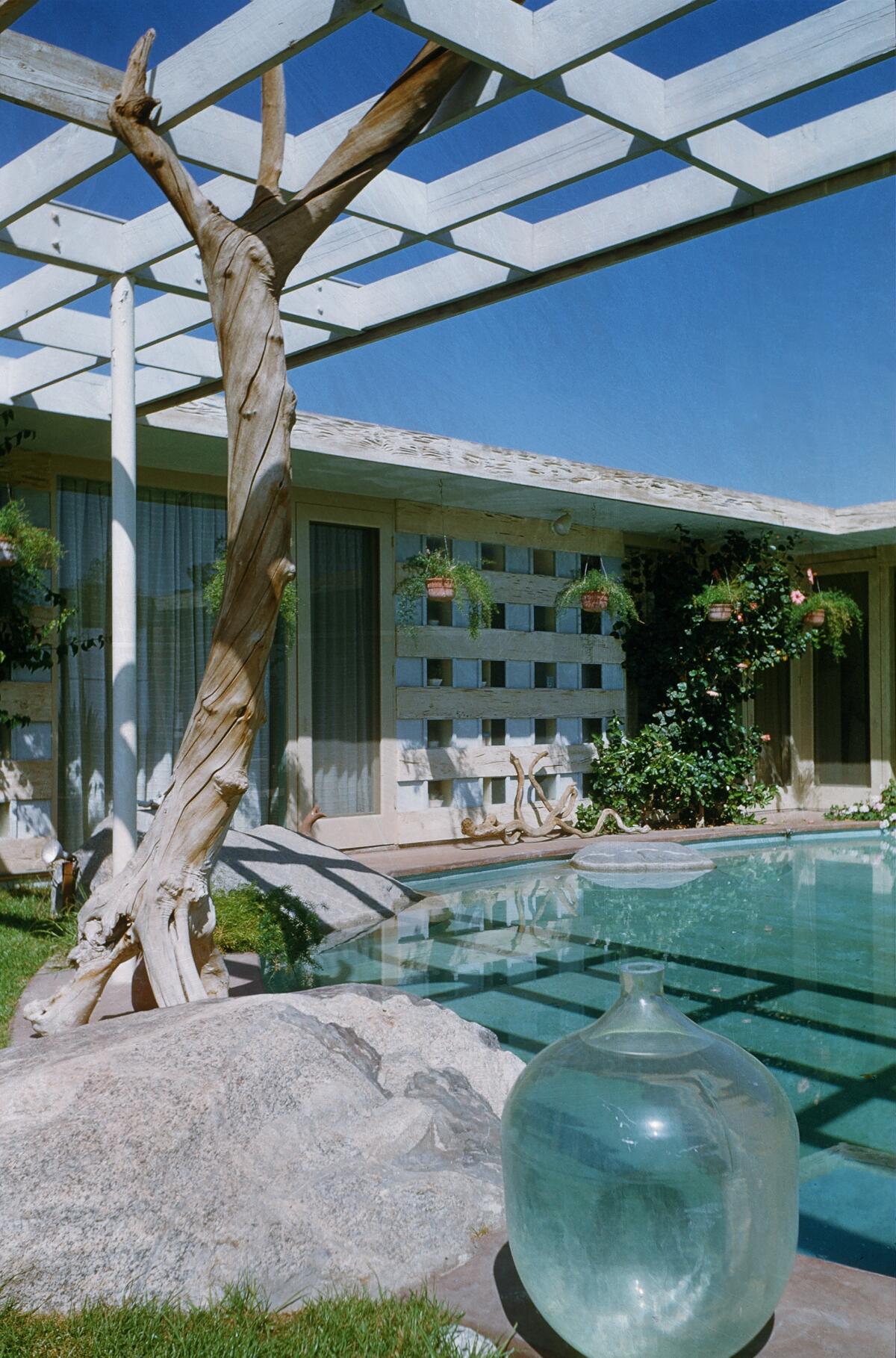
The Colburn School has been awarded a federal Save Americaâs Treasures grant to preserve the Herbert and Trudl Zipper Archive, which holds handwritten letters, original manuscripts, papers and audiovisual elements connected with composer, activist and Holocaust survivor Herbert Zipper.
The Chicago-based United States Artists has named 45 recipients of this yearâs fellowships in a variety of disciplines, each of which comes with an unrestricted $50,000 cash award. The five visual artists are Natalie Ball (Portland), Carolina Caycedo (Los Angeles), Christine Sun Kim (Berlin), Guadalupe Maravilla (Brooklyn) and Thaddeus Mosley (Pittsburgh).
Passages
Photojournalist Marilyn Stafford, whose career was launched with an almost accidental photo shoot of subject Albert Einstein, has died at 97.
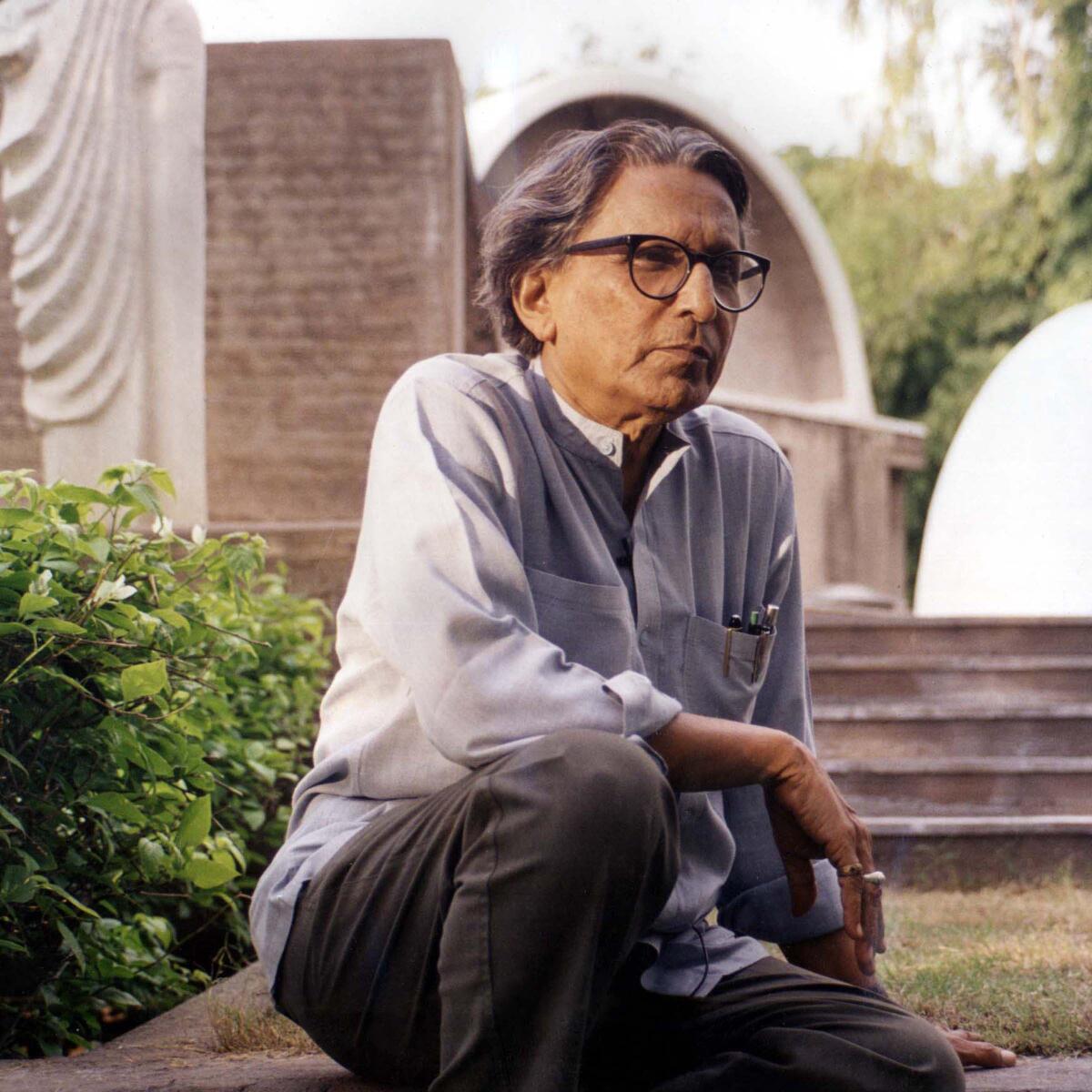
Architect Balkrishna Doshi, the only Indian to have won the Pritzker Prize, died Tuesday at 95.
In other news
Did New Yorkâs Metropolitan Museum of Art err in accepting a gift of almost 100 paintings by a single contemporary artist?
Sixty archaeological artifacts looted from sites around Italy â including a Herculaneum fresco â were returned in a ceremony in Rome on Monday.
A 17th century oil sketch of Saint Jerome by Sir Anthony Van Dyck that turned up in a farm shed in Kinderhook, N.Y., sold at auction Thursday for $3,075,000.
A recent show of hyper-real still-life paintings of lettuce, croutons, chicken, anchovies and dressing by Adam Higgins invited viewers to mentally toss the salad.
The American Alliance of Museums has placed the Orlando Museum of Art on probation following the Florida institutionâs exhibition of alleged fakes by painter Jean-Michel Basquiat.
Peruâs Culture Ministry has closed access to Machu Picchu in the wake of anti-government protests.
And last but not least ...
As always, Matt Cooper has the Essential Culture Guide for everything worthwhile to see in L.A. right now, including art, music, theater and dance. And Steven Vargas compiles the L.A. Goes Out newsletter, with a host of imminent events.
The biggest entertainment stories
Get our big stories about Hollywood, film, television, music, arts, culture and more right in your inbox as soon as they publish.
You may occasionally receive promotional content from the Los Angeles Times.



